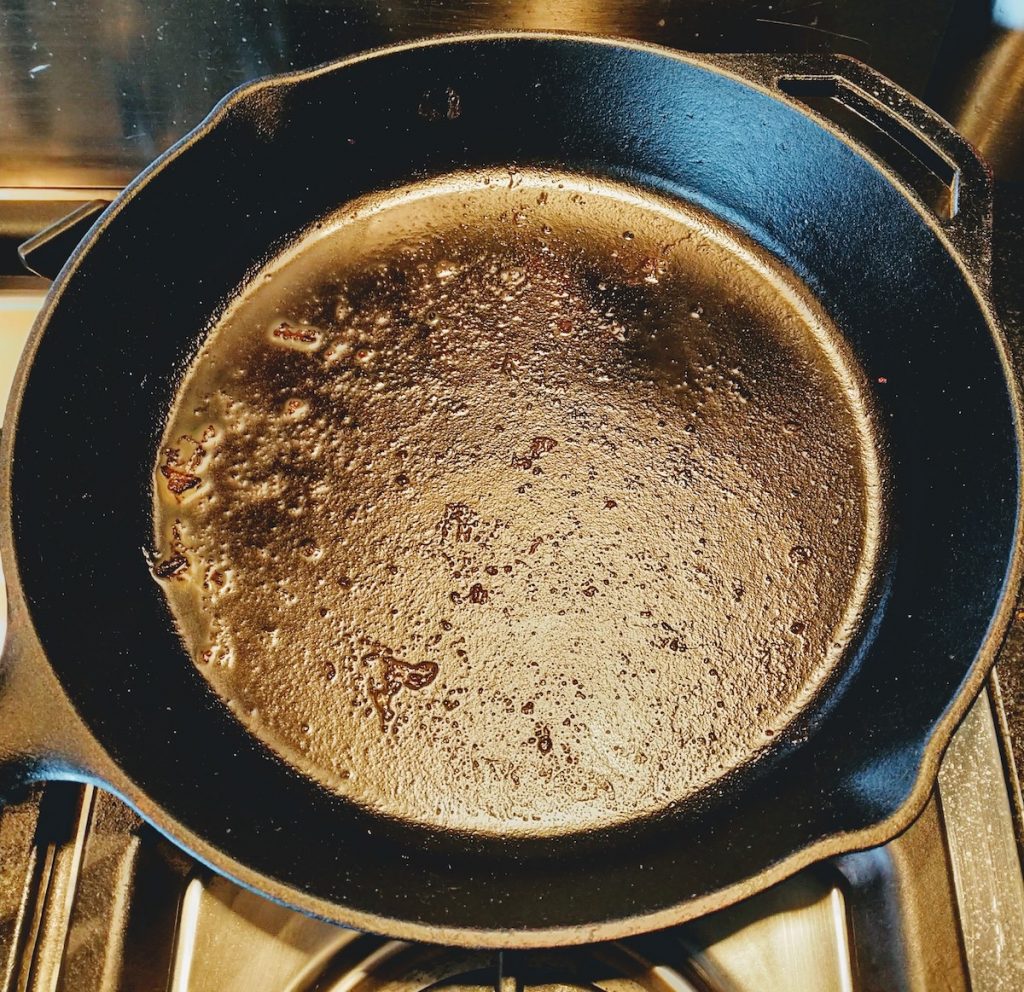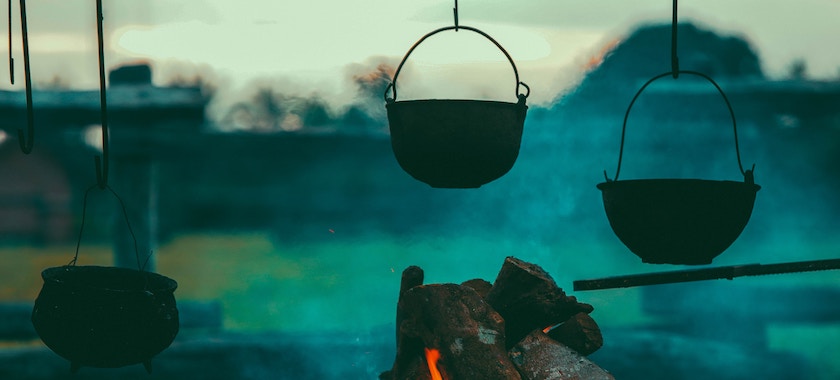I have a 12" and 9" cast iron pan I use to make everything from steak to stir fries. I've always loved the taste of food I made on the pans, but I used to dread cast iron cleaning and maintenance.
Today I'll talk about how best to clean and store a cast iron pan so you'll never dread breaking out your cast iron again!

No matter how diligent you are when cooking, you're going to have a bit of a mess every time you cook with cast iron. Even well-seasoned pans will have some burnt on food or crumbs and excess oils and grease.
For day to day cleaning there are a few things you need to do. Do these right after cooking, then take a few easy steps when you clean the rest of your dishes at night.
Immediately after you're done cooking (okay, perhaps a few minutes), you should take a few steps to clean your pan.
At some point later, you'll want to clean your pan under hot water. Use a nylon scraper brush to brush off any remaining stuck food, and possibly follow up with a wooden scraper.
Contrary to popular belief, it's okay to use soap on your pan sometimes; I use dish soap when something is still stuck.
Dry your pan completely. I like to use paper towels here to get off any last water. Don't use your nice kitchen linen though, cast iron pans have a tendency to leave black marks on whatever you use to dry them.
Finally, add a very light coast of oil – flaxseed, grapeseed, or vegetable oil work well here. Personally though, I like to use saturated fats. Fats like coconut oil, butter, lard, or ghee don't go rancid easily and are great choices for your pan.
You shouldn't ever soak your cast iron pans in water.
Even the best-seasoned iron pan is susceptible to rust. If you soak your pans (or even if you don't fully dry your cast iron pans) you might unexpectedly find them rusted.
Don't worry, it's not a crisis! If you do get a bit of rust on your pans you can fix it easily. We'll go into that next.
Cast Iron pans – even the well-seasoned ones – rust when they're exposed to water and air.

Your first move with a lightly rusted pan is to rub the spot with a paper towel and a bit of oil. Use flaxseed, grapeseed, or vegetable oil (or slightly melted saturated fat) and put your elbows into it.
If that fails, pour a little salt on the rust. Coarse salt or something like kosher salt works great. Work that in with your paper towel and try to get off the rust.
Your final move is steel wool. If there's still some rust, hit it with some steel wool and work it in a circle until you can't see any more.
If you used oil and a paper towel to remove the rust, just ensure it's completely dry and you can leave the pan alone until you cook again. If you used salt or steel wool, you should re-season your pan – follow our cast iron seasoning instructions.
If you know you're not going to use your pan for a while, you should coat it with a saturated fat, not a vegetable oil. Saturated fats are much more stable at room temperature; it's harder for them to go rancid if you don't use your pan for some time.
Use ghee, lard, butter, coconut oil, palm oil, or another saturated fat (possibly slightly melted) to coat your pan. Heat it gently – either on the stovetop or baked in the oven – to set the oil a bit.
Then hang the pan or store it in your cupboard. Try to keep it out of direct sunlight, even for saturated fats. If you did it right and you eliminated all the moisture, the next time you use your pan you should be immediately good to go.